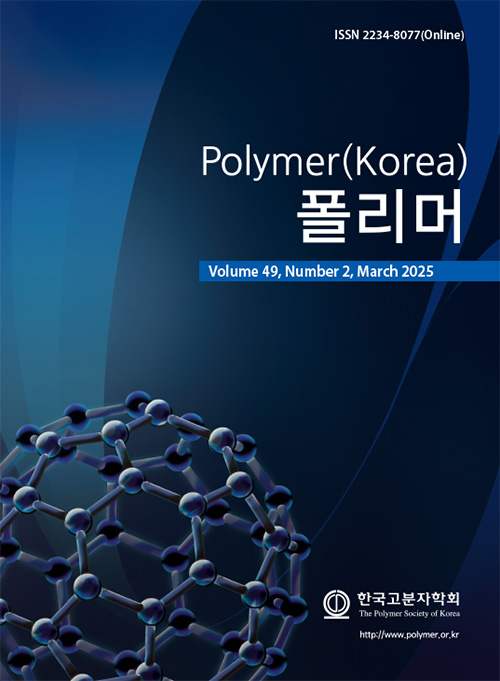- Evaluation of Ultraviolet Stability and Surface Properties of Poly(methyl methacrylate) Doped with Metal Oxide Nanoparticles
Dina S. Ahmed, Emad Yousif*, Mohammed Kadhom**, Ahmed Ahmed***, Amani A. Husain***, Hassan Hashim****, Tayser S. Gaaz*****, Muna Bufaroosha******, Benson M. Kariuki*******, and Gamal A. El-Hiti********,†

Department of Chemical Industries, Institute of Technology-Baghdad, Middle Technical University, Baghdad, 10074 Iraq
*Department of Chemistry, College of Science, Al-Nahrain University, Baghdad, 64021 Iraq
**Department of Environmental Science, College of Energy and Environmental Science, Al-Karkh University of Science, Baghdad, 10081 Iraq
***Polymer Research Unit, College of Science, Al-Mustansiriyah University, Baghdad, 10052 Iraq
****Department of Physics, College of Science, Al-Nahrain University, Baghdad, 64021 Iraq
*****Air Conditioning and Refrigeration Techniques Engineering Department, College of Engineering and Technologies, Al-Mustaqbal University, Babylon, 10052 Iraq
******Department of Chemistry, College of Science, United Arab Emirates University, Al-Ain 1818, United Arab Emirates
*******School of Chemistry, Cardiff University, Main Building, Park Place, Cardiff, CF10 3AT, UK
********Department of Optometry, College of Applied Medical Sciences, King Saud University, Riyadh 11433, Saudi Arabia- 금속 산화물 나노 입자가 도핑된 폴리(메틸 메타크릴레이트)의 자외선 안정성 및 표면 특성 평가
Reproduction, stored in a retrieval system, or transmitted in any form of any part of this publication is permitted only by written permission from the Polymer Society of Korea.
Photostabilizing polymeric materials is crucial for protecting them from damage by UV irradiation. Recent advancements have significantly enhanced polymer resistance to photooxidation and harsh environmental conditions by developing polymeric additives designed to act as photostabilizers. The present study assesses the significant impact of metal oxide nanoparticles (NPs) on enhancing the surface properties of poly(methyl methacrylate) (PMMA) and paving the way for more durable applications. The reaction of PMMA and propylenediamine led to the incorporation of amino residues, which was followed by the attachment of various metal oxide NPs, namely nickel oxide (NiO), titanium dioxide (TiO2), magnesium oxide (MgO), and zinc oxide (ZnO). Thin PMMA films doped with metal oxide NPs experienced reduced photodegradation compared to PMMA films containing the amino residues only. Of the metal oxide NPs studied, PMMA doped with ZnO NPs exhibited the lowest level of weight loss and surface damage caused by UV irradiation. These findings indicate the potential of metal oxide NPs in enhancing the photostability and surface properties of PMMA, contributing to the development of more durable polymeric materials.
Keywords: surface modification, poly(methyl methacrylate), ultraviolet irradiation, surface morphology, metal oxide nanoparticles.
- Polymer(Korea) 폴리머
- Frequency : Bimonthly(odd)
ISSN 2234-8077(Online)
Abbr. Polym. Korea - 2024 Impact Factor : 0.6
- Indexed in SCIE
 This Article
This Article
-
2025; 49(2): 197-204
Published online Mar 25, 2025
- 10.7317/pk.2025.49.2.197
- Received on Sep 20, 2024
- Revised on Nov 29, 2024
- Accepted on Dec 12, 2024
 Correspondence to
Correspondence to
- Gamal A. El-Hiti
-
Department of Optometry, College of Applied Medical Sciences, King Saud University, Riyadh 11433, Saudi Arabia
- E-mail: gelhiti@ksu.edu.sa








 Copyright(c) The Polymer Society of Korea. All right reserved.
Copyright(c) The Polymer Society of Korea. All right reserved.